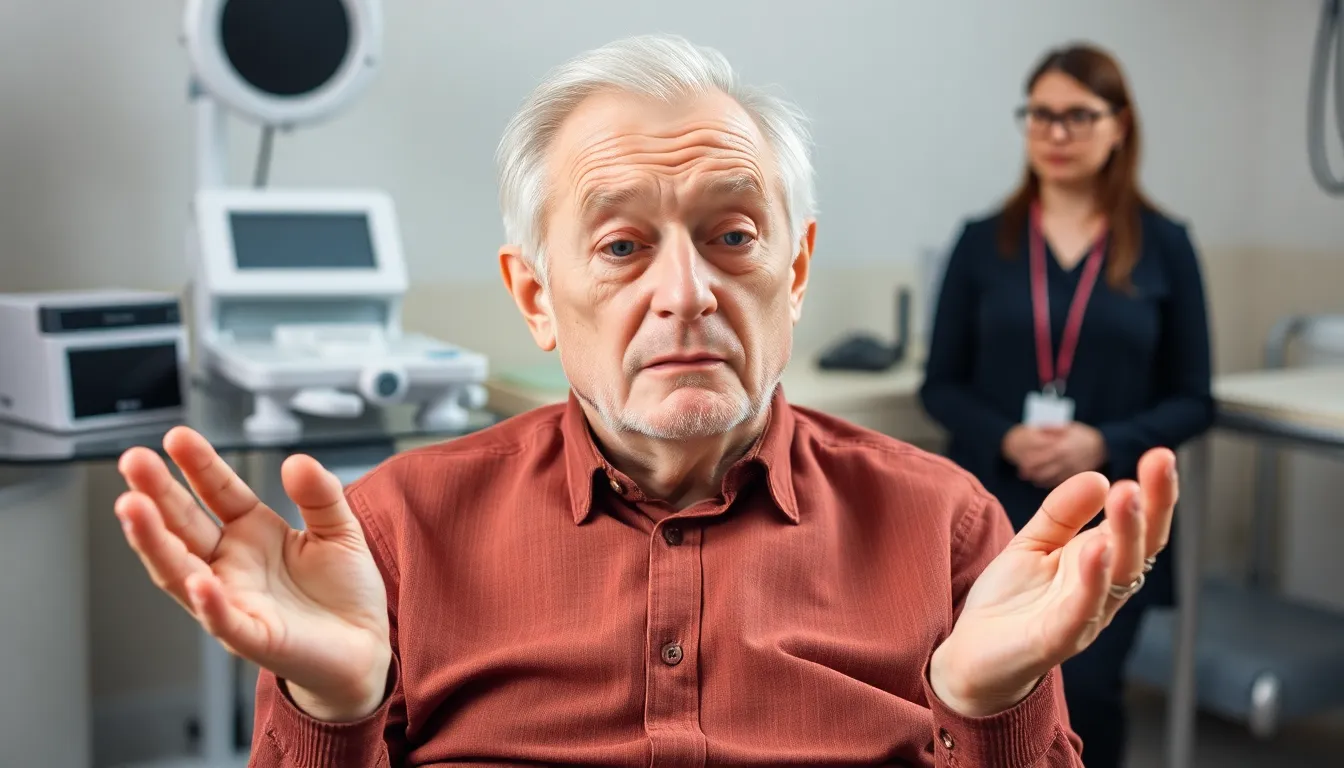Tardive dyskinesia might sound like a fancy dance move, but it’s anything but fun. This neurological disorder can leave individuals with involuntary movements that can be as unpredictable as a cat on a hot tin roof. While many medications can help improve mental health, some come with a side of unwanted jerky motions.
Table of Contents
ToggleOverview of Tardive Dyskinesia
Tardive dyskinesia refers to a movement disorder marked by repetitive, involuntary muscle movements. This condition predominantly arises from the long-term use of antipsychotic medications. Symptoms can include facial grimacing, tongue protrusion, and abnormal limb movements. Individuals affected by this disorder often struggle to control these motions, leading to significant distress.
Certain medications increase the risk of developing tardive dyskinesia. Antipsychotics, particularly first-generation antipsychotics, are the most well-documented culprits. Additionally, drugs like antiemetics may contribute to the disorder. Age and duration of medication use play a critical role in the onset of symptoms.
Diagnosis typically involves a thorough clinical evaluation, focusing on the history of medication use and movement patterns. Healthcare professionals utilize standardized rating scales to assess severity and impact. Early detection is crucial to managing symptoms effectively, though complete reversal may not be achievable.
Treatment options vary, often targeting symptom management rather than a cure. Switching to atypical antipsychotics may reduce the risk and severity of tardive dyskinesia. Integrating therapies such as physical therapy can also enhance quality of life. Regular monitoring by healthcare providers helps ensure timely interventions for those at risk.
Understanding tardive dyskinesia enhances awareness among healthcare providers and patients alike. Raising awareness about the potential side effects of certain drugs empowers patients to engage in informed discussions with their healthcare teams.
Understanding Tardive Dyskinesia

Tardive dyskinesia results from prolonged exposure to certain medications, particularly those affecting dopamine pathways. This neurological disorder is increasingly linked to mental health treatments.
Causes and Risk Factors
Antipsychotic medications, especially first-generation types, play a significant role in the development of tardive dyskinesia. Long-term use of these drugs heightens the risk, particularly with higher doses. Age stands out as another risk factor; older adults exhibit increased susceptibility. Additionally, individuals with a history of mood disorders or previous episodes of neuroleptic-induced side effects face greater chances of developing the condition. Other medications, such as certain antiemetics, can also contribute to the disorder.
Symptoms and Diagnosis
Symptoms of tardive dyskinesia manifest as involuntary muscle movements, including facial grimacing and tongue protrusion. Abnormal limb movements can occur, affecting both upper and lower body functions. Diagnosis relies on clinical evaluation, with healthcare professionals utilizing standardized rating scales to assess severity. Observation over time is crucial, as symptoms may fluctuate. Identifying earlier signs can lead to more effective management strategies.
The List of 50 Drugs That Cause Tardive Dyskinesia
Certain medications are strongly linked to tardive dyskinesia, impacting those on long-term treatments. Below is a detailed breakdown of common drug categories known to trigger this condition.
Antipsychotic Medications
Antipsychotic medications are among the primary culprits in inducing tardive dyskinesia. First-generation antipsychotics such as haloperidol and chlorpromazine show heightened risk levels. Patients taking second-generation antipsychotics like olanzapine and risperidone should also consider the potential for developing symptoms. Factors like dosage and duration of treatment play crucial roles in risk enhancement. Older adults often face an increased susceptibility due to age-related changes in medication metabolism. Awareness of these medications helps patients, caregivers, and healthcare providers avoid or monitor risks associated with these treatments.
Antidepressants
Antidepressants can also contribute to tardive dyskinesia, though the correlation is less prominent compared to antipsychotics. Medications such as fluoxetine and sertraline may incur symptoms in certain individuals. Notably, patients on tricyclic antidepressants like amitriptyline face elevated risks. Age and concurrent use of other medications amplify potential for side effects. Understanding this link empowers patients to discuss treatment options with prescribers, focusing on their mental health needs while remaining vigilant about possible involuntary movements.
Anti-nausea Medications
Anti-nausea medications, particularly some dopamine receptor antagonists, also pose risks for tardive dyskinesia. Metoclopramide, frequently used for gastrointestinal disorders, carries a significant warning regarding prolonged use. Prochlorperazine, another common anti-nausea drug, also reflects increased risks. Patients receiving these treatments should weigh the benefits against possible long-term side effects. Regular evaluations can play essential roles in assessing symptom emergence and medication effectiveness. Knowledge about these drugs aids individuals in making informed decisions regarding their health management.
Other Drug Categories
Other drug categories also contribute to the development of tardive dyskinesia. Certain mood stabilizers, such as lithium, show potential links, especially in patients with prolonged treatment courses. Medications prescribed for epilepsy may also induce involuntary movements, necessitating vigilance among users. Additionally, some antihistamines exhibit associations with tardive dyskinesia when used extensively. Keeping informed about these diverse drug categories enhances awareness for patients and healthcare professionals alike. Regular monitoring and communication encourage timely interventions to mitigate risks.
Prevention and Management Strategies
Effective prevention and management strategies can significantly reduce the risk of tardive dyskinesia. Staying vigilant helps in identifying symptoms early and managing treatment options more effectively.
Monitoring and Early Detection
Regular evaluations by healthcare providers enhance early detection of tardive dyskinesia symptoms. Observing patients for subtle involuntary movements, like facial grimacing or abnormal limb motions, is crucial. Standardized rating scales assist in assessing the severity of symptoms over time. Timely discussions about any emerging side effects allow healthcare providers to modify treatment plans as needed. Awareness of risk factors, such as age and duration of medication use, aids caregivers in monitoring patients closely. Creating a conducive environment for open communication fosters proactive management of symptoms.
Treatment Options
Switching to atypical antipsychotics can mitigate tardive dyskinesia symptoms for some patients. Medications like clozapine and quetiapine often present a lower risk of developing involuntary movements than first-generation drugs. Integrating therapies like physical therapy or occupational therapy helps manage symptoms by improving motor function and coordination. In certain cases, medications such as beta-blockers or benzodiazepines may offer additional relief. Close collaboration with healthcare providers ensures tailored treatment plans that consider individual patient needs. Lastly, ongoing education on potential side effects empowers patients and caregivers to make informed decisions about their treatment journey.
Understanding tardive dyskinesia is vital for anyone involved in mental health care. Awareness of the medications that can lead to this condition empowers patients and healthcare providers to make informed decisions. Regular monitoring and open communication about potential side effects are essential for effective management.
Implementing prevention strategies and considering alternative treatment options can significantly reduce the risk of involuntary movements. By prioritizing education and collaboration, individuals can navigate their treatment journeys with greater confidence and minimize the impact of tardive dyskinesia on their lives.




